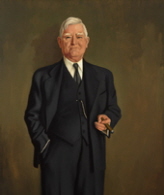Ryan Seeks to Become 1st GOPer to Simultaneously Win VP and Congressional Seat
Only three previous individuals – all Democrats – have won the vice-presidency and were reelected to their seat on Capitol Hill on Election Day

In 2008, Biden hedged his bets and ran for a seventh term to his U.S. Senate seat from Delaware as well as accepting Barack Obama’s invitation to be his vice-presidential running mate.
Biden won both races and, of course, resigned from his Senate seat and became the 47th Vice-President of the United States.
Four years later, Ryan will follow suit, continuing to run for reelection to an eighth term to his 1st congressional district seat in Wisconsin while running with Mitt Romney to take back the White House for the Republican Party.
And how common are dual-office victories for vice-presidential nominees?
A Smart Politics analysis finds that only three candidates have simultaneously won both the vice-presidency and another office since the introduction of the major party system almost 200 years ago, with only five individuals attempting this feat along the way – and none of them Republicans.
All five candidates have successfully retained their seat on Capitol Hill, but only three became vice-president that cycle:

· In 1960, Democrat Lyndon Johnson defeated future Republican U.S. Senator John Tower by 16.9 points – the narrowest of his three U.S. Senate election victories. Johnson resigned on the last day of his second term.
· In 2008, Joe Biden defeated Republican Christine O’Donnell in the Delaware U.S. Senate contest by 29.4 points. Biden served a few weeks of his eighth term before resigning a week before becoming vice-president.
Two other candidates were reelected to the U.S. Senate but were not elected vice-president:
· In 1988, Democrat Lloyd Bentsen won his fourth term as a U.S. Senator from Texas with a 19.2-point win over Beau Boulter, while losing on Michael Dukakis’ ticket.
· In 2000, Al Gore’s running mate Joe Lieberman won a third term to Connecticut’s Class I U.S. Senate seat with a 29.0-point victory over Republican Philip Giordano.
With the exception of Garner and now Ryan, most vice-presidential candidates have not chosen (or not been able) to simultaneously run for their U.S. House seat:
· 1836: Whig Francis Granger (NY-26) lost running alongside William Henry Harrison.
· 1864: Democrat George Pendleton (OH-01) lost on George McClellan’s ticket.
· 1868: Republican Schuyler Colfax (IN-09) won running with Ulysses Grant.
· 1876: Republican William Wheeler (NY-19) won as Rutherford Hayes’ running mate.
· 1908: Republican James Sherman (NY-27) won on William Howard Taft’s ticket.
· 1964: Republican William Miller (NY-40) lost running with Barry Goldwater.
· 1984: Democrat Geraldine Ferraro (NY-09) lost as Walter Mondale’s running mate.
With his attention focused on helping Mitt Romney win the White House, Paul Ryan will also face Democrat Rob Zerban down the ballot in Wisconsin’s 1st CD race.
Zerban will no doubt use the vice-presidential nominee’s dual ambitions as a way to bolster his campaign.
Follow Smart Politics on Twitter.

1. Were LBJ serving as the speaker of the US House in 1959-60 (rather than a mere Senate floor leader of the majority DEM caucus) then he would not have needed to strong-arm his state’s legislature into enacting the so-called Lyndon’s Law. [Garner stood for both federal offices in 1932, long before anyone had ever heard of “Landslide Lyndon”.]
2. If “tariff man” grows tired of the current VP Pence and wishes to stand for re-election with someone else, he may well consider Senator John Cornyn, who hails from a state with a large base of partisan rightist Southern Baptists in the east and an equally significant base of ranchers and farmers in the west – a twofer as far as appealing to the presumed core base goes. Also, Ds Johnson and Bentsen as well as D-turned-R Phil Gramm made good use of the “LBJ Law” to fuel their respective “dual ambitions”.